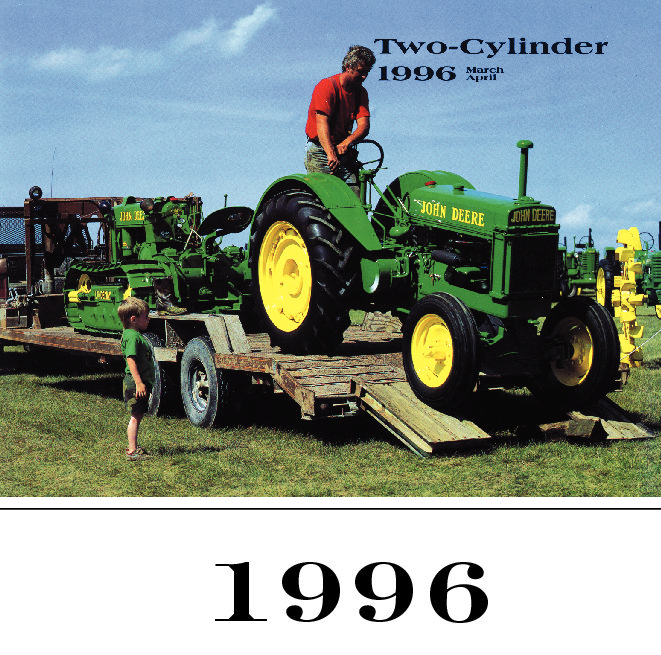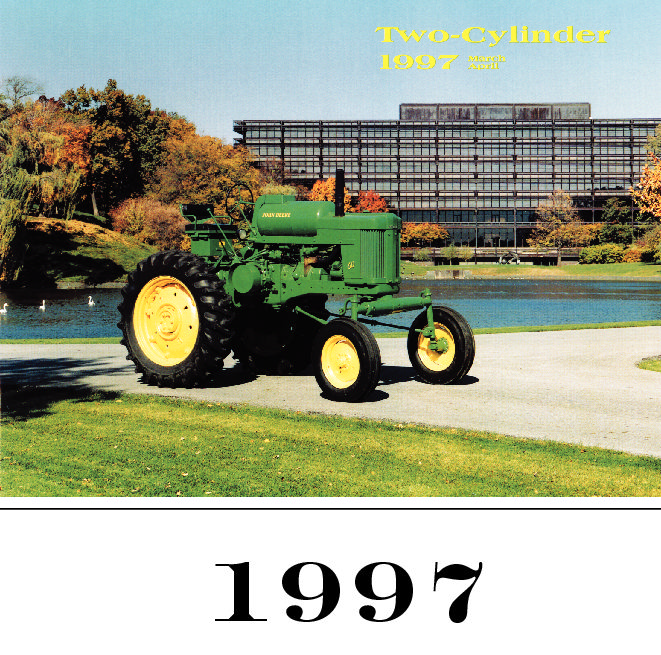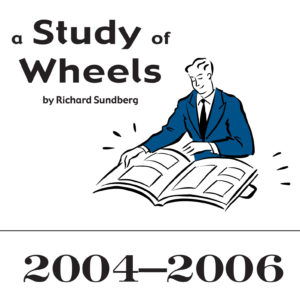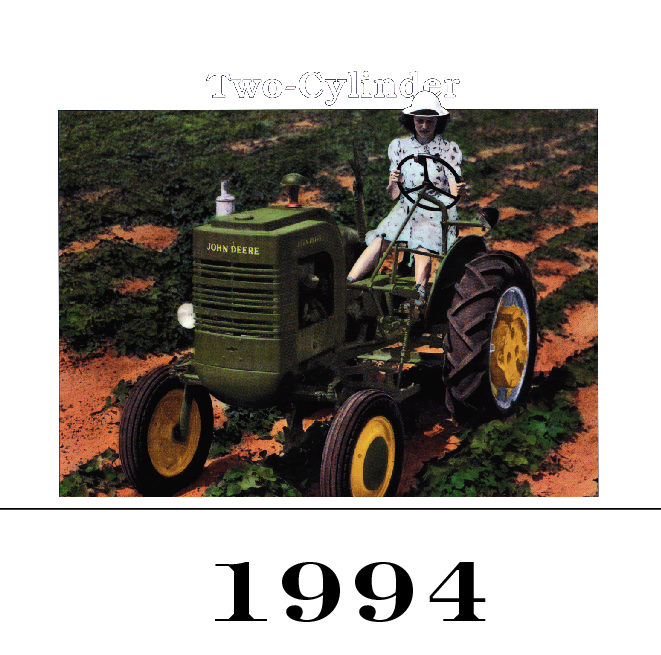
1996 Feature Articles — CD-ROM
December 2, 2018
1987 Feature Article Digital Downloads
December 3, 2018$14.95
The John Deere Styled Model “AO” (1949–1953) Tractor
Bonus: New Generation Tractor Production Figures
Tractor Production Figures
The John Deere Model “LI” Tractor
The John Deere Model “D” (1926–1930) Tractor
Two-Cylinder VII
The John Deere Model “D” (1931–1938) Tractor
STYLED MODEL “AO” (1949–1953) TRACTOR: The Model “AO”, along with its close relative, the “AR”, were the last John Deere Tractors to be styled. It wasn’t until May 1949 that the last of the exposed-radiator “A” standard-treads were driven off the assembly line and into history. A little over a month later, the newly styled “AO” and “AR”, finally available with a gasoline-burning engine, were in production. Looking very much like the Model “R” introduced in January, it was likely that they would be well received.
TRACTOR PRODUCTION FIGURES: Pictorial overview along with production information on Waterloo-, Dubuque-, and Moline-built two-cylinder tractors. Information compiled from Waterloo Tractor Production Log and Serial Number Registers (housed at the John Deere Archives in Moline, Illinois).
MODEL “LI” TRACTOR: The Model “LI” was officially introduced as a unique model separate from the styled Model “L” in 1941, and was given its own block of serial numbers starting with 50001. These tractors were equipped with the same John Deere vertical two-cylinder engine that the “L” received at serial number 640000. Prior to that, the “L” had a Hercules engine. So did the “LI”. They were mixed in with the “Ls”. Same 625000 to 639999 serial number range (which actually ended at 634840).
MODEL “D” (1926–1930) TRACTORS: Most anyone even the least bit familiar with vintage John Deere Tractors knows something about the Model “D”. In one form or another, they were manufactured by John Deere at Waterloo, Iowa, for 30 years. Amazing — especially when considering that two other John Deere models stepped in to take the place of the “D” four years before the assembly line was finally dismantled.
From 1923 to 1953, for many people it became a symbol of John Deere. Owners of other makes of tractors might have poked a little fun at some of the “Johnny Poppers,” but not at the “D”. The respect for the capable, durable, economical tractor was widespread. That’s why they are still a very important part of many collections, and why it’s so meaningful to have one of the early models.
TWO-CYLINDER 7: Pictorial recap of Two-Cylinder 7.
MODEL “D” (1931–1938) TRACTORS: Model “D” enthusiasts often tend to separate the series into four groupings: The spoke-flywheel models of 1924, 1925, and early 1926 (the spoke-flywheel “D” was actually introduced in 1923); the unstyled models of 1926 through 1930; the unstyled models of 1931 through 1938; and the styled models of 1939 through 1953. Some may take it a step or two further and sub-divide these groupings into additional versions. For example, the unstyled group of 1931 through 1938 could easily be broken into the 1931–1934 models (increased horsepower engine, but still 2-speed transmission), the 1935–1938 models (3-speed transmission), and the “DI” (1935–1941, overlapping unstyled production into the styled era).
- Information-packed, educational, and entertaining Feature Articles; with photos and accuracy unmatched elsewhere!
- Each CD contains all of the Feature Articles for an ENTIRE YEAR, and is enclosed in its own unique sleeve!
- Searchable PDF format! What does that mean? You’ll be able to easily locate specific subjects in the article, “zoom-in” on photos (in color and b/w), and print off any part (or the entire article) for your personal use.
CD-ROMS are for COMPUTER-USE ONLY and WILL NOT PLAY on traditional television or radio entertainment systems!!! Opened CDs are not eligible for refund or return. Computer System Operating Requirements: Adobe Reader 8.1.3 • Adobe Reader 9 • Windows Vista • Windows XP • Windows 2000 SP4 and higher • Mac Intel/PowerPC 10.4.11 – 10.5.6 • Mac Intel 10.4.4 – 10.4.10 • Mac PowerPC 10.4.3 – 10.4.10, and higher




Reviews
There are no reviews yet.